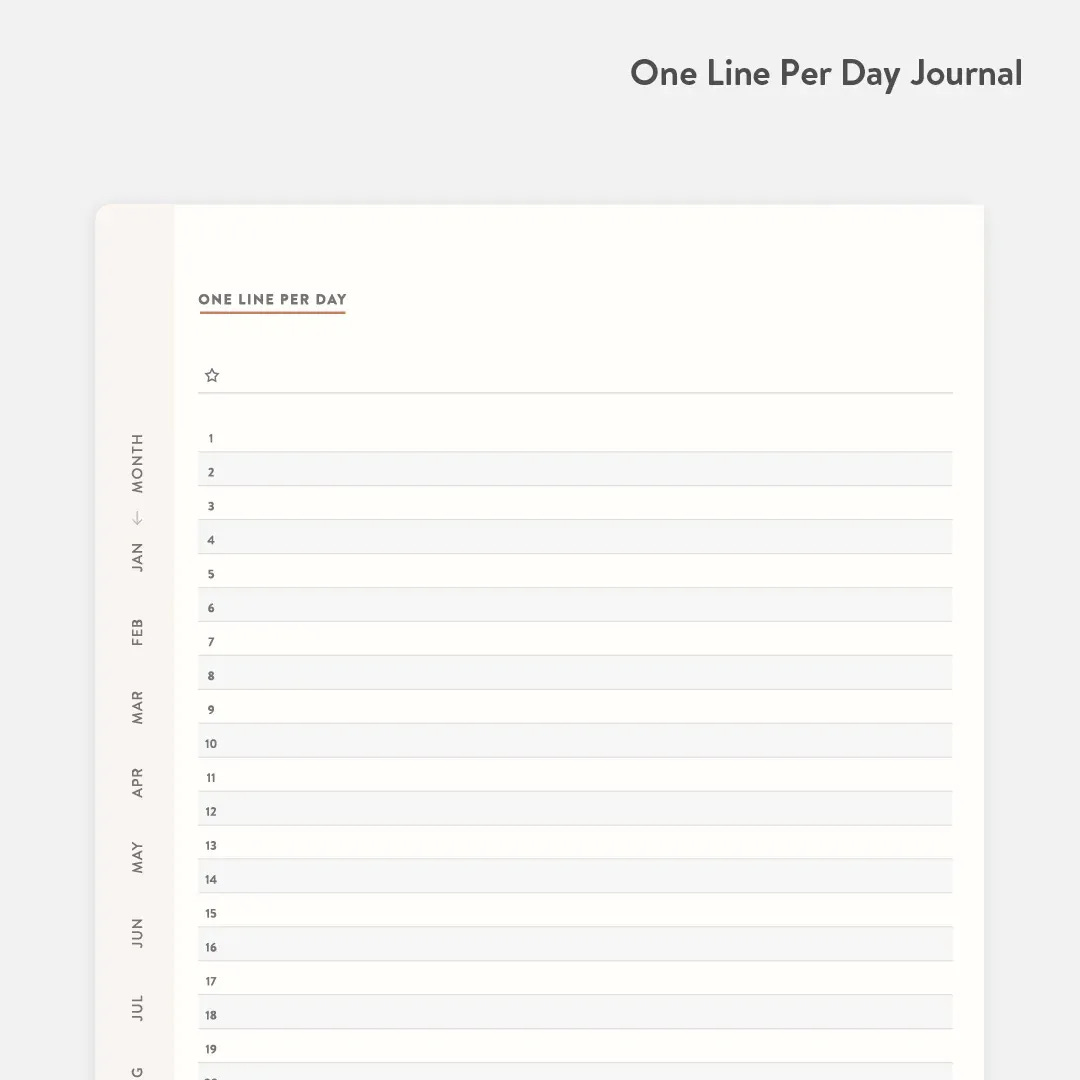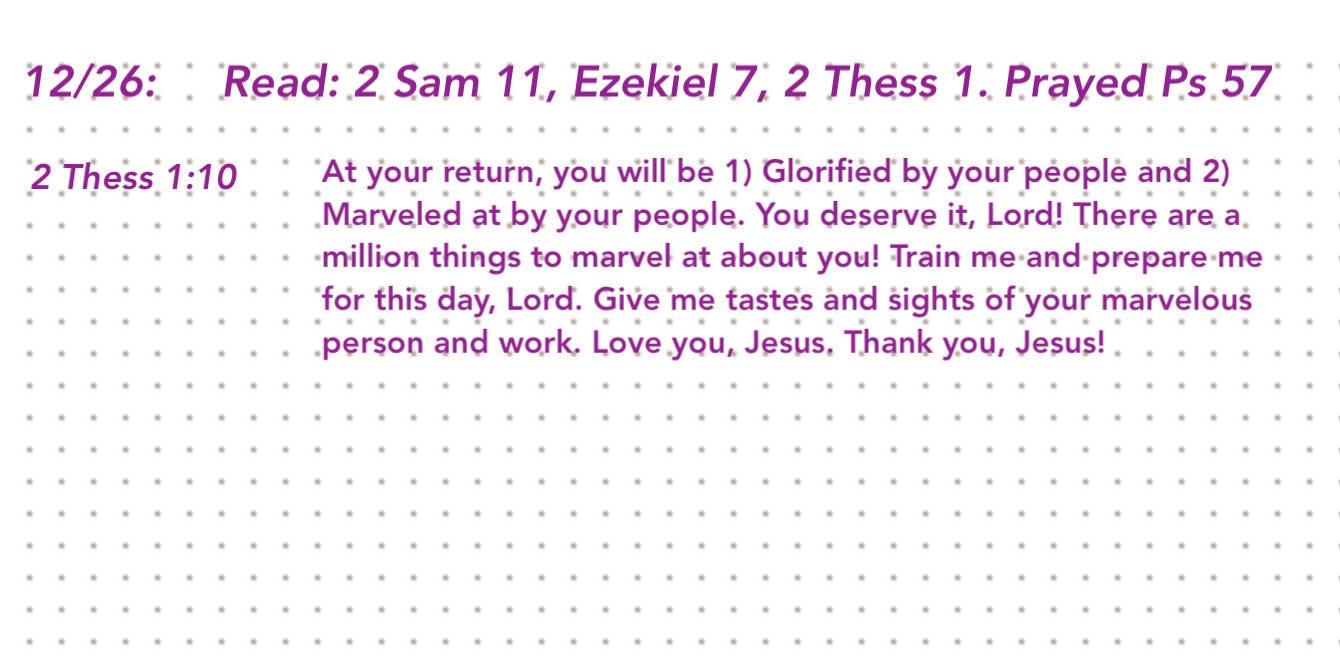A Spiritual Use of the Atomic Habit Journal
I’ve always struggled with journaling—until now.
A new tool helps me combine Bible reading, journaling, gratitude, prayers, discipline, and habit tracking. I’ve been using the Clear Habit Journal from James Clear for over a year now, and let me show you how I’m using it in my spirituality.
The Journal’s 3 Parts
If you haven’t read Atomic Habits by James Clear, you will enjoy it. His premise is that big changes in our lives come from the tiny changes and choices we commit to over the long haul. You don’t need to read Clear's book to benefit from the journal he’s created in partnership with Baron Fig. I’ve used Baron Fig journals for years because of their paper quality and lay-flat binding, so I wasn’t worried about the quality and build of this journal. Baron Fig even sponsored the old writing podcast I did back in the day.
The journal is made up of three major parts:
1) One Line Per Day
2) Blank Pages
3) Habit Tracker
Here’s how I’m using each section for my spiritual life.
1) One Line Per Day
I couldn’t keep up with a journaling habit previously because I never knew what to write about. But anyone can write one line per day.
I’m using the One Line Per Day in multiple ways each month. Next to the star at the top of the page, the journal allows you to write your theme for the month. Here’s what I’ve done so far:
October: Summary highs or lows
November: What happened today?
December: Grateful and what happened today?
Here’s a few examples of I wrote on these lines:
10/1: Oliver to Ninja Gym. Family Game night: Ticket to Ride. Grateful.
10/5: Studied French. Spurgeon research on Song 2:16.
-
11/28: Final Ph.D. seminar at SBTS
11/30: Lunch with Dr. Whitney to discuss dissertation
-
12/13: Passed French. Thank you, God! :)
12/23: Family vacation was so good. Rejoicing over new book deal.
You can use these lines however you want. You have twelve sheets of these for, you guessed it, twelve months of the year. You simply circle the month on the left and get to journaling. This section is helpful for people like me who need journaling training wheels. I’m surprised at how consistent I have been, and how much I look forward to filling it out. These little lines are an easy way to chronicle your life, God’s work in your life, praises, laments, prayers, and the joys of life.
2) Blank Pages for Bible Reading, Meditation, and Prayer
The largest section of the journal are the blank pages. I’m using these blank pages to keep a record of what I read that day from the Bible, and my written reflections/meditations that I typically write as a prayer to God.
Each page has enough room for 2-3 entries. You could use a page per day but I decided not to for a couple of reasons. First, I don’t want the pressure of filling up a page—I mean, c’mon, I’m journaling one line a day here. Second, if you do a page day, your journal won’t last a year. There are 168 blank dot-grid pages, so 2-3 entries per page gives you plenty of room—336 to 504 days entered. The journal comes with discreet markers on the side that divide up the page into thirds. I aim for those but sometimes I go over or under.
The point here isn’t to fill up a certain amount of space with prayers and meditations, but to meaningfully pray and reflect upon something from God’s word. The goal is to commune with the triune God. This can happen with one or two verses, or a handful. It could be a prayer that floods a page, or maybe three entries on a verse each day. That’s up to you.
I use these pages by writing the date, and then next to that I write down what I read, and what Psalm I prayed through. Underneath this, on the left margin, I write any Scripture reference that I want to mediate on or pray. Most days I’ll have 2-3 jots, but on 12/26 I wrote one based on 2 Thess 1:10, “On that day when he comes to be glorified by his saints and to be marveled at by all those who have believed, because our testimony among you was believed.” Here's what I wrote on this verse after meditating on the world “marvel.”
If you miss a day of writing, it’s not a big deal because these are blank pages. You can customize this however you want. I have found this to be a helpful practice, reminder, and chronicle of my discipleship with the Lord Jesus.
3) Habit Tracker for Training Yourself
"Train yourself for godliness" (1 Tim 4:7). One of the best ways we train ourselves for anything is by tracking, monitoring, and reviewing our progress. The journal comes with twelve sheets of habit trackers, one for every month, with lines for every day of the month for you to track whatever habit you want. You supply the habits/disciplines/actions you want to train and pay attention to.
In October, I tracked: Up at 6am, Bible reading, Pray Psalms, Read 50 pages, Exercise 30 minutes, Write, Journal, Meditate, Family Prayer, and Study French. If you do that discipline or habit for the day, you give it a nice X or fill or line in the box. This helps me see what I'm really doing, what needs more attention, and where I'm being lazy and undisciplined.
My habit tracker has changed every month, adding new ones like “Spurgeon Research” or “Encourage Family Member.” You can customize this to where you want or need to grow. James Clear gives examples of habits on his site. You could also read Spiritual Disciplines of the Christian Life and choose a few disciplines.
After three months of using the Clear Habit Journal, I’ve found it to be a helpful tool for my spirituality. I’ve tried the Monk Manual and a few other tools like this, but the customized approach serves me best, enabling me to combine a handful of spiritual habits into one repository.
While James Clear is not a Christian, and I could do without the faint quotes in a tiny font (Hindu sayings, John Wooden, and more), remember: all truth is God's truth. Honestly, I forget those quotes are even there. Easily passed over and ignored.And in the spirit of Ecclesiastes 2:26, Clear has made a tool that can serve those who fear and please God. Give it a try. Let me know what you think.






